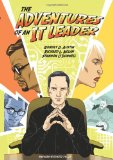Both my readers will have noticed there’s been a fairly large gap between my posts here, as life (picnic, lightning, and all that) has intervened. Like J.D. Salinger, however, I have continued writing drafts on various topics, and I plan to post more in the coming months.
My past posts here have often delved into a favorite theme of mine: that IT people tend to go to extremes, often rejecting something useful (an approach, a technology, a tool) simply because it has downsides. Such rejection is at times emotional and even self-righteous; we can get so caught up in it that we fail to look at a topic at all evenhandedly, let alone dispassionately.
No better case example along these lines has come along in the past year than the active and contentious #NoEstimates debate on Twitter and in the blogosphere. I’ll have a much more detailed post soon about my objections to the #NoEstimates approach overall (full disclosure: I’m one of its most vocal critics), but right now, let’s focus on one aspect of the relentless advocacy I see in the hashtag’s proponents: its lack of evenhandedness.
Specifically, proponents of #NoEstimates insist repeatedly and proudly that they’re “exploring”; recently, one major advocate tweeted out a call for links to posts about the topic (“I’m gathering links to #NoEstimates content”) so that these could be collected and posted. Yet, it turned out that only posts advocating one side of the issue would be included, even though the resulting list of links was then touted to people who might be “interested in exploring some ideas about #NoEstimates.” When challenged on this dubious interpretation of the meaning of “exploring”, the advocate then defiantly attached a disclaimer: “Warning! There are no links to “Estimate-driven” posts”. In short, making the exploration balanced wasn’t even remotely his goal.
Advocates can use their own blog for whatever purposes they want, of course. Yet, there’s an interesting split going on here: staunchly claiming to be “exploring”, while rejecting the inclusion of any summarizing or critical posts, and then sneeringly labeling all such posts as “estimate-driven.” There couldn’t be a clearer case study of IT black-and-white-ism, them vs us. Explore all you want, this behavior says, as long as you’re doing it on my side of the issue and on my terms. What, there’s a post that attempts to summarize both sides of the argument? Not interested.


